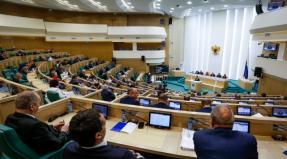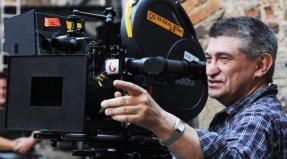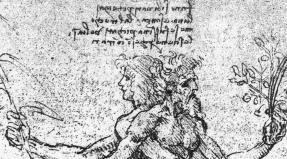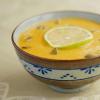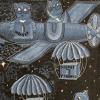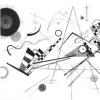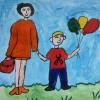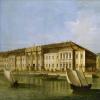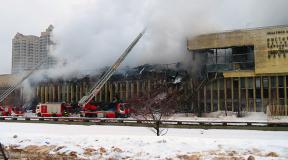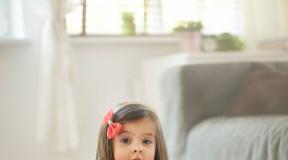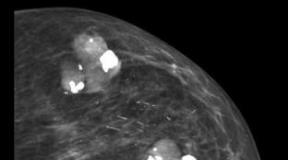The readiness of the preschool institution for the new school year. Preparing children in the pediatric area for admission to a preschool institution. Composition of the commission on pedagogical personnel
_________________________________________________________________
(education governing body)
SAMPLE ACT
CHECKS OF PRE-SCHOOL EDUCATION
INSTITUTIONS BY THE ____ / ____ ACADEMIC YEAR
(full name of the institution, type, year of construction)
______________________________________________________________________
(institution address, telephone)
______________________________________________________________________
(surname, name and patronymic of the head of the preschool institution)
In accordance with the resolution (order) of the Head of Administration _________ dated "__" _________ ____, No. ___ inspection was carried out by a commission consisting of:
from the administration _______________________________________________;
from the education management body ______________________________;
from sanitary and epidemiological surveillance _____________________;
from fire supervision ___________________________________________;
from catering _______________________________________;
from the trade union body _________________________________________;
from the economic and operational service ______________________.
The Commission established the following:
1. In the ____ / ____ academic year, the preschool institution has __ groups with a total of __ pupils.
Norms specified in the license: _____________________________
Number of groups:
the first groups of early age _____ children,
the second groups of early age _____ children,
the first younger groups of _____ children,
second junior groups of _____ children,
middle groups of _____ children,
older groups of _____ children,
preparatory groups for school _____ children.
Of these, children / groups with round-the-clock stay _______________
Availability of vouchers, correctness of their registration and storage __________
2. Staffing (staffing levels of all categories) ___________________________________________________________
The correctness of their placement _____________________________________
3. Registration of a preschool institution ____________________________ ______________________________________________________________________
4. Availability of the necessary documentation (statutory documentation: license, charter, job descriptions, local acts, certificate of attestation, certificate of state accreditation, agreements on interaction with the founder, with parents, etc., work plan for the year, children's movement book, book orders, a plan for advanced training of teachers, etc.) in accordance with the approved nomenclature of cases ______________________________________________________________________ ______________________________________________________________________
5. The readiness of the pedagogical office to carry out teaching and educational work (availability of fiction, toys, manuals, crafts for organizing various activities of children) ____________________ ______________________________________________________________________ ______________________________________________________________________ compliance of educational and methodological support with the requirements of programs, pedagogical expediency of their storage and placement _____________ ______________________________________________________________________ ______________________________________________________________________
6. Availability of a preschool institution's mode of operation and a network of classes in groups, the number of training sessions, the correct combination of classes during the day and week _________________________________________________ ______________________________________________________________________
7. Territory: total area ___________________________________,
condition of the fence ___________________________________________,
green area ______________________________________________
Are there environmentally hazardous industrial facilities in the immediate vicinity of the preschool educational institution __________________________
Updated road signs at the entrance to the preschool educational institution _______________________________________________________
Preparedness of group sites, verandas, shady awnings and other equipment ________________________________________________,
the presence and condition of the vegetable garden - the berry _________________________,
availability of an economic site and the condition of waste bins _____,
availability of a garbage collection agreement ________________________________
8. Building: general condition of the premises ___________________________;
quality of the repair performed:
capital ___________________________________________________;
current _______________________________________________________;
artificial lighting, its condition _________________________;
daylight _________________________________________;
ventilation work (transom, at the food block-forced) ________;
the nature and condition of the heating system ______________________;
provision of a preschool institution with fuel (in% of the annual demand), its storage __________________________________________;
the presence of an act of pressure testing of the heating system ___________________;
availability and condition of fire-fighting water supply and primary fire extinguishing means (fire hydrants, hoses, reservoirs and reservoirs, hand-held fire extinguishers, etc.) _________________________________________;
availability of Fire Safety Rules for secondary schools, vocational schools, boarding schools, orphanages, preschool and out-of-school and other educational institutions (07.89) ______________________;
availability of emergency exits _______________________________________;
availability of an evacuation plan in case of fire _____________________________;
availability and state of supply:
water __________________________________________________________,
gas __________________________________________________________,
electricity _________________________________________________;
availability of sewerage _____________________________________________
9. Readiness of group rooms, their sanitary condition _____ _____________________________________________________________________;
organization of drinking regime ___________________________________;
type of lighting in the institution (fluorescent, diffused light, etc.) _______________________________________________________________ _____________________________________________________________________;
provision of furniture, its condition and marking ______________;
provision of bed linen, its condition, number of shifts _________________________________________________________________ _____________________________________________________________________;
provision with toys, didactic material _____________;
availability of specially equipped rooms for organizing training sessions _____________________________________________________;
condition of technical equipment (TV, computer, projector, etc.) _______________________________________________________________ _____________________________________________________________________;
sanitary and technical condition of the gym, outdoor sports grounds, equipment and inventory _____________________________;
a hall for music lessons, its readiness _____________________
10. Catering unit: the quality of the repairs performed ____________________;
the presence of an emergency titanium ______________________________________;
plate (what kind), its condition ___ _________________________________;
availability of an act on electrical measuring work (checking the condition of grounding and insulation of power grids, electrical equipment, testing and measuring the insulation resistance of electrical wires) ________ _____________________________________________________________________;
condition of cutting tables ___________________________________;
presence and condition of cutting boards, knives, their marking and storage ____________________________________________________________;
availability of dishwasher baths, their condition and number __________;
conditions for washing dishes and their storage, the presence of hot water _____________________________________________________________________;
provision of dishes, its condition ___________________________;
kettle washing, its equipment __________________________________;
potato peelers, their condition __________________________________;
the number of grinders, their condition _____________________________;
availability and labeling of cleaning equipment _______________________
11. Storerooms: the quality of the repairs performed ____________________;
storage of bulk products _____________________________________;
storage of perishable food (number of refrigerators, their condition) __________________________________________________________;
availability and condition of containers for transportation of products (perishable, vegetables, bread, etc.) ______________________________
12. Disinfection of a preschool institution: the presence of disinfectants ________,
place of preparation ___________________, container __________________,
availability of pots __________, irons _____________________________,
availability of vacuum cleaners for cleaning ___________________________________,
provision of workers with overalls, place of storage ________
13. First-aid post: his condition ____________________________________;
availability of the necessary medical equipment, its condition _____________________________________________________________________;
storage of perishable medicines __________________ _____________________________________________________________________;
availability of a room for a sick child ________________________;
availability of medical records (medical books, timeliness of passing medical examinations, marriage log, sanitary log and instructions for using medical equipment) ______________________________________________________________________
14. New in the design and equipment of a preschool educational institution __________________________________________ ______________________________________________________________________ ______________________________________________________________________ ______________________________________________________________________
15. Comments and suggestions of the commission: ___________________________
______________________________________________________________________
______________________________________________________________________
______________________________________________________________________
______________________________________________________________________
______________________________________________________________________
16. The conclusion of the commission on the readiness of the preschool educational institution for the new academic year ____________________________________ ______________________________________________________________________
The act was drawn up on ________ day ___________
Month _________ year ________
Commission chairman: ___________________ Commission members: ___________________ ___________________ ___________________ ___________________
Notes.
2. The act of acceptance of the readiness of the preschool educational institution is drawn up in two copies. One act is sent to the higher OUO, the other remains in the institution.
3. The commission, as a rule, includes a representative of the district (city) administration, the head of the OUO, the paradise (mountains) coma of the trade union, the representative of the State Sanitary and Epidemiological Supervision and the State Fire Inspection, the head of the preschool institution.
4. If the commission believes that the preschool educational institution cannot be accepted, it is necessary to formulate specific conditions for its admission.
6. Status ratings can be “satisfactory” and “unsatisfactory”.
Natalia Tikhomirova
Analytical information on the results of operational control "Readiness of the preschool educational institution for the new academic year"
Topic « The readiness of the preschool educational institution for the new academic year» .
Objects control: groups and premises of the preschool educational institution.
Verifier: Head of MDOBU N.V. Vorobyova, senior educator N. S. Tikhomirova.
purpose: prepare groups for the start of the educational years, taking into account the age characteristics of children, to replenish didactic and play material.
In connection with the introduction of the main educational program of preschool education in the preschool educational institution "From birth to school" under the editorship of N. Ye. Veraksa, T. S. Komarova, M. A. Vasilyeva, it became necessary to revise the subject-developing environment. Therefore, in the annual plan for 2014-2015 ac. year included the tasks of creating and improving the developing subject-developing environment in accordance with the Federal State Educational Standard. The organization of the developing environment in a preschool educational institution, taking into account the Federal State Educational Standard, is built in such a way as to make it possible to most effectively develop the individuality of each child, taking into account his inclinations, interests, level of activity.
In connection with the transition to the Federal State Educational Standard of Preschool Education, the teachers of our preschool educational institution faced the problem of the need to enrich the environment with elements that stimulate the cognitive, emotional, motor activity of children.
We try to ensure that the environment surrounding children in kindergarten ensures the safety of their lives, promotes health improvement and hardens the body of each of them, and also stimulates children to develop cognitive, artistic and aesthetic abilities.
Creating a subject-spatial development environment, the preschool educational institution employees took into account the following principles:
1. The environment should perform educational, developmental, upbringing, stimulating, organized, communicative functions. But the most important thing is that it should work to develop the child's independence and initiative.
2. A flexible and variable use of space is needed. The environment must serve the needs and interests of the child.
3. The shape and design of items is focused on the safety and age of children.
4. Decor elements should be easily replaceable.
5. In each group it is necessary to provide a place for children's experimental activities.
6. The color palette should be presented in warm, pastel colors.
7. When creating a developing space in a group room, the leading role of play was taken into account.
8. The subject-developing environment of the group changes depending on the age characteristics of the children, the period of study.
9. It is important that the subject environment had the character of an open, open system, capable of adjustment and development. In other words, the environment is not only developing, but also developing. Under any circumstances, the objective world surrounding the child must be replenished and updated, adapting to neoplasms a certain age.
Choosing toys, equipment for the premises, kindergarten teachers strive to provide the maximum conditions for the child's sensory development and so that he feels comfortable and experiences positive emotions. Play items are stored on open shelves and cabinets. Children use medium and small toys at their own discretion for independent play. In free access, on the shelves of open and closed cabinets, mosaics, cubes, board-printed and didactic games are stored.
For speech development created:
Series of plot pictures, for composing stories, card indexes, loto, didactic games;
Children's library with a selection of books according to the program, favorite works of children, encyclopedias, children's magazines, etc.;
Theatricalization corner with various types of theaters, in the preschool educational institution there are large and small screens, costumes, hats, masks, audiocassettes with recordings of children's songs and fairy tales.
For mental development created:
Mathematical corner with handouts of counting material, sets of numbers, mathematical signs, geometric figures, entertaining and informative mathematical material, logic and mathematical games, schemes and plans, a set of volumetric geometric figures;
A corner for experimenting with natural materials, bulk products, containers of different capacities, a nature calendar, houseplants, clocks, watering cans.
For aesthetic development created:
Artistic corner with different types of paper, coloring books, pencils, felt-tip pens, clay, crayons, etc.;
Musical corner with tape recorder, audio library, children's musical instruments, portraits of composers.
The educational space for cognitive activity is designed taking into account the psychological, pedagogical, aesthetic and sanitary and hygienic requirements. For role-playing games in groups, there are attributes in accordance with the age and gender of the children.
In the early age group there are strollers, cars and other motor toys. In the senior groups of the kindergarten, children play with enthusiasm with a constructor Lego... They include small toys, figures of animals, people, cars in the game. When creating a subject-developing environment, teachers take into account the regional component: Albums, fiction, waste and natural material for artistic work are presented.
Preschoolers must move, so all groups have "Corners of health", which are equipped with non-standard equipment for the development of basic types of movements, in a small amount there are balls, hoops, skipping ropes.
Information corners have been designed for parents, from which they learn about the life of the group (daily routine, schedule of classes, ongoing activities. Receive the necessary information (tips, advice, consultations, memos) from educators on the upbringing, education and development of children. There are corners of children's creativity.
results: In review readiness of groups for the new school year 6 groups took part. It was positively noted that attention is paid to equipping the subject environment and creating conditions for its development. During the review, a change in the subject-development environment towards a qualitative improvement of the material and technical base was revealed - these are groups such as "Bees", "Gnomes", "Polyanka", "Starfish"... In these groups, there is a consistently high-quality organization of the subject environment in relation to compliance with sanitary and hygienic standards, age requirements, and the accumulation of play material.
In these groups, full-fledged conditions have been created for the upbringing and development of preschool children, zones of different focus: play, natural research, etc. Cognitive corners are filled with the necessary equipment, located taking into account SanPiNs and age characteristics of children. The selection of games, toys and equipment in play areas in terms of quantity and quality is close to optimal. Play equipment is scattered throughout the room, grouped by type. Presented by large and small toys. In groups "Bees", "Kapitoshka" and "Kurnosiki" there is enough space for physical activity. In groups "Bees" and "Gnomes" the creative approach of educators in creating a subject-developing environment, using additional material, made both with their own hands and with the participation of parents, is noted. The play interests of both girls and boys have been sufficiently taken into account.
As advantages, the following can be noted indicators:
Aesthetics and a sense of taste in decoration groups: "Bees", "Gnomes";
Brightness and modernity foster: "Bees", "Gnomes", "Starfish", "Polyanka" and "Kurnosiki";
The quality of information content corners: "Bees", "Gnomes", "Starfish", "Polyanka";
Competent zoning space: "Bees", "Gnomes", "Polyanka";
Game state material: "Bees", "Gnomes", "Starfish", "Polyanka";
For high-quality creation of a subject-developing environment recommended: groups "Kapitoshka" and "Kurnosiki" update, supplement and diversify the subject-development environment, redesign parenting corners and make them better and more informative.
Group "Kapitoshka" and "Starfish" it is necessary to pay attention to the irrational use of the group room when organizing a subject-developing environment, placing play areas.
After the analysis organization of a subject-spatial developmental environment in a preschool educational institution in accordance with the Federal State Educational Standard of DO, the following conclusions can be drawn moment:
1. Materials and equipment in most group rooms are selected taking into account hygienic, pedagogical and aesthetic requirements.
2. Identified and satisfied the individual interests, inclinations and needs of children of each specific group.
3. There is gender-role targeting of equipment and materials based on the actual number of boys and girls in each group.
However, the amount of materials and equipment is partially brought in line with the list. It is necessary to replenish the equipment for the physical development of children, as well as update the existing handouts on cognitive and speech development. Therefore, further work on replenishing the subject-developing environment will continue.
Senior educator N. S. Tikhomirova
A great responsibility falls on the workers of the children's clinic in preparing the child for admission to children's institutions.
Admission to a child care institution causes complex adaptive reactions in the child's body, sometimes adversely affecting his condition, health and development. The duration and nature of adaptation depends both on the individual characteristics of the child and on other factors.
Special observations have established that the duration of adaptation depends on age. Children entering the nursery at the age of 5-6 months quickly get used to the new conditions, since they do not yet have fixed stereotypes that need to be changed. Children older than 1 year 8 months-1 year 9 months also get used to the nursery more quickly. Although they have stable stereotypes, they are more "developed". In particular, their nervous processes are more mobile, which makes it easier to adapt to changing conditions, they understand the speech of an adult well, it is easier to interest them in activities, toys. The adaptation process is most difficult in children aged 5-6 months. Up to 1 year 7 months - 1 year 8 months, since by this time the children had already formed quite stable habits. The body of a child of this age, due to the low mobility of nervous processes and weak active inhibition, is not able to slow down the old and form new stereotypes, which causes negative reactions.
In order to facilitate the adaptation of children to a preschool institution, the following rules must be observed.
The local doctor and m / s must take into account the peculiarities of the family of a child preparing for admission to a preschool institution: housing conditions, the nature of work of the parents, etc.
The mother needs to be given recommendations on preventing stress reactions of the child during the adaptation period, to bring the child's home regime closer to the regime of a childcare institution, to actively teach the child to communicate with children of the appropriate age and adults, eliminate motion sickness before bedtime, sucking a pacifier, bottle feeding, eating monotonous food, etc. .d.
It is necessary to highlight the children who make up the "risk group", such children must be consulted again with psychoneurologists and other specialists before entering a child care institution.
Particular attention should be paid to children with disabilities in physical development (more than 1 year), with manifestations of inharmonious development, lagging behind in neuropsychic development by more than 2 months, often ill, with manifestations of rickets, anemia, allergies. These children are subject to referral to a child care institution only after appropriate recovery.
The organization of preventive vaccinations requires special attention, since vaccination causes a temporary change in the reactivity of the body, contributes to an increase in allergic manifestations, and a decrease in resistance.
A clear continuity in the work of the district pediatrician and honey is important. workers of the child care institution.
Preparing children in the pediatric area for admission to preschool institutions
The preparation of children for admission to preschool institutions (nursery, nursery-kindergarten, kindergarten) is carried out by a district doctor - a pediatrician, a district m / s, a paramedic or a nurse of a healthy child's office and consists of two main sections: general and special training.
General training is the implementation of generally accepted measures for the systematic, starting from the neonatal period, serving children in the pediatric area in order to ensure harmonious, physical and neuropsychic development, optimal health and family education, which is the key to the correct preparation of the child for admission to a preschool institution ...
Special training begins at the age of 3 months and includes the following activities:
Monthly sanitary and educational work of the district doctor-pediatrician and medical staff of the office of a healthy child with parents through thematic conversations on the issues of proper physical education and preparation of children for admission to a preschool institution;
Clinical examination of children for 2-3 months. Before entering a preschool institution, a local pediatrician, specialist doctors, conducting laboratory tests;
Health improvement and treatment of children, depending on their level of health;
Prevention of acute diseases (ARVI, influenza, etc.) for 1-2 months. Before admission to a child care institution with the use of funds aimed at increasing nonspecific protective mechanisms of immunity, including general and local hardening measures, the introduction of elements of respiratory gymnastics and physical education (at home), teaching the child to breathe through the nose, prescribing a course of UFOs, ascorbic acid preparations , B vitamins, rosehip preparations, interferon;
Registration of documentation in accordance with the content of work on preparing a child for a preschool institution: recording in the history of the child's development at the beginning and end of training; preparation of a discharge summary for a children's institution according to a certain scheme with mandatory recommendations of a district doctor for the period of adaptation according to the regime, nutrition, physical education, an individual approach, health-improving and therapeutic measures for the prevention of acute diseases, exacerbations, chronic foci of infections and background conditions.
4. In case of illness, the child may be sent to the children's team no earlier than two weeks after clinical recovery.
5. It is forbidden to carry out preventive vaccinations within a month before the child's admission to a preschool institution.
It is allowed to admit a child to a child care institution without preventive vaccinations, the first preventive vaccination in a child care institution is prescribed after the end of the adaptation period, but not earlier than 1 month later.
6. The issue of sending children of the "risk" group, as well as children with chronic diseases and congenital malformations to a children's institution, is resolved individually, depending on the condition of each child, by commission with the involvement of relevant doctors1 specialists.
Download:
Preview:
Analytical reference
based on the results of operational control
"The readiness of the preschool educational institution for the new academic year"
Control date: 22.08 – 26.08.2016
Objects of control: kindergarten groups.
Reviewers : head Baltaeva O.V., senior educator Anufrieva I.V., nurse Seyutova S.A.
purpose : to prepare the groups and premises of the preschool educational institution for the beginning of the academic year, taking into account certain criteria.
In connection with the introduction of the Federal State Educational Standard of DL, it became necessary to revise the subject-developing environment in accordance with the Standard. The organization of the developing environment should be built in such a way as to make it possible to most effectively develop the individuality of each child, taking into account his inclinations, interests, level of activity.
Teachers are required to ensure the safety of life for children, promote health and harden the body of each of them.
Criteria for creating PPRS:
Creating a subject-spatial development environment, the preschool educational institution employees took into account the followingprinciples:
1. The environment should perform educational, developmental, upbringing, stimulating, organized, communicative functions. But the most important thing is that it should work to develop the child's independence and initiative.
2. A flexible and variable use of space is needed. The environment must serve the needs and interests of the child.
3. The shape and design of items is focused on the safety and age of children.
4. Decor elements should be easily replaceable.
5. In each group it is necessary to provide a place for children's experimental activities.
6. The color palette should be presented in warm, pastel colors.
7. When creating a developing space in a group room, the leading role of play was taken into account.
8. The subject-developing environment of the group changes depending on the age characteristics of the children, the seasonal period.
9. It is important that the subject environment has the character of an open, open system, capable of adjustment and development. In other words, the environment is not only developing, but also developing. Under any circumstances, the objective world surrounding the child must be replenished and updated, adapting toneoplasms a certain age.
Analysis, conclusions:
Choosing toys, equipment for groups, the kindergarten teachers, as shown by the test, tried to maximize the conditions for the children to feel comfortable and experience positive emotions.
In all groups, full-fledged conditions for the upbringing and development of children are created, zones of different directions are rationally combined: play, physical culture, environmental, research, etc. The corners are filled with the necessary equipment, located taking into account the SanPin and age characteristics of children. The selection of games, toys and equipment in play areas in terms of quantity and quality is close to optimal. Play equipment is scattered throughout the room, grouped by type. Presented by large and small toys.
The creative approach of educators in creating a subject-developing environment, the use of additional material, made both with their own hands and with the participation of parents, is noted. The play interests of both girls and boys have been sufficiently taken into account.
For speech developmentcreated:
Series of plot pictures, for composing stories, card indexes, loto, didactic games;
Libraries with a selection of books according to the program, favorite works of children, encyclopedias, children's magazines, etc .;
Theatrical corners with various types of theaters have been supplemented; in the preschool educational institution there are large and small screens, costumes, hats, masks, audiocassettes with recordings of children's songs and fairy tales.
For cognitive research activitiessupplemented:
Corners for experimenting with natural materials, bulk products, containers of different capacities, a nature calendar, houseplants, clocks, watering cans.
For aesthetic developmentsupplemented:
Artistic corners with different types of paper, coloring books, pencils, markers, plasticine, crayons, etc .;
Musical corners with tape recorder, audio library, children's musical instruments, portraits of composers.
The educational space for cognitive activity is designed taking into account the psychological, pedagogical, aesthetic and sanitary and hygienic requirements. For role-playing games in groups, there are attributes in accordance with the age and gender of the children.
In the early age group there are strollers, cars and other motor toys. In the senior groups of the kindergarten, children play with enthusiasm with a constructorLego ... They include small toys, figures of animals, people, cars in the game. When creating a subject-developing environment, teachers take into account the regionalcomponent : Albums, fiction, waste and natural material for artistic work are presented.
Preschoolers must move, so all groups have"Sports corners", which are equipped with non-standard equipment for the development of basic types of movements, in a small amount there are balls, hoops, skipping ropes.
Supplemented with information for parents"Parent corners", from which they learn about the life of the group (daily routine, schedule of classes, activities); get the necessary information:advice, recommendations, consultations, reminders about the upbringing, education and development of children. There are"Corners of children's creativity".
Specific test results, recommendations: In the review of the readiness of groups for the new academic year10 groups took part. It was positively noted that in all groups the closest attention is paid to equipping a subject-spatial developmental environment and creating conditions for its development.
But specific comments were also identified:
Group "Stars": put in order the building material (paint).
Group "Streams": make screens, pick flowers in the ecological corner by age.
"Sunflowers" group: remove dolls from "Kitchen"; in the ecological corner - flowers by age; patriotic corner - remake by age; submit a plan of work with specialists. Educators of this group need to discover the basics of "preschool education" and figure out how to equip the group, PPMS with play material by age.
Forget-me-nots group: to equip all zones and corners.
Deeper comments, recommendations were given to everyone on the ground ...
The best groups based on the results of the audit, where almost all the principles of constructing PPRS are observed at a high level -"Chamomile", "Stars".
The worst prepared - the group "Sunflowers".
Educators were given a week to fulfill all comments and recommendations (until 09/02/2016).
Senior educator I.V. Anufrieva
FULL NAME. | Signature |
|
Baltaeva Elena Nikolaevna | ||
Bardina Natalia Viktorovna | ||
Baigusheva Elena Ivanovna | ||
Belyaeva Galina Fedorovna | ||
Biryukova Lyudmila Viktorovna | ||
Gerasimova Tatiana Valentinovna | ||
Ilyina Natalya Nikolaevna | ||
Kazakova Elena Danilovna | ||
Karpova Valentina Alexandrovna | ||
Kozlova Natalia Petrovna | ||
Kolesova Tatiana Vladimirovna | ||
Kuzminova Natalia Valentinovna | ||
Kurbatova Maria Vladimirovna | ||
Malyutina Marina Alexandrovna | ||
Orekhova Olga Anatolievna | ||
Perevozchikova Irina Petrovna | ||
Puzakova Oksana Evgenievna | ||
Sadchikova Irina Sergeevna | ||
Slepchenko Galina Vasilievna | ||
Soboleva Elena Alexandrovna | ||
Stepanova Olga Ivanovna | ||
Fedotova Irina Alexandrovna | ||
Fimenkova Svetlana Anatolievna | ||
Khurasyeva Galina Alekseevna |
Preview:
CRITERIA FOR READING THE READINESS OF DOW GROUPTO THE BEGINNING OF THE SCHOOL YEAR
Checked by: ___________________________________ Date of check: ________________________________
Documentation
Group | FULL NAME. educator | Report with conclusions on self-education for 2015-2016 academic year | Self-education plan for 2016-2017 academic year | All "Journals" and timesheets | Educator work program (with all applications) | Plan of interaction with specialists | Overall score |
№ 1 | Khurasyeva G.A. | ||||||
Sadchikova I.S. | |||||||
№ 2 | Ilyina N.N. | ||||||
T.V. Gerasimova | |||||||
№ 4 | L.V. Biryukova | ||||||
N. V. Kuzminova | |||||||
№ 5 | Stepanova O.I. | ||||||
Baigusheva E.I. | |||||||
№ 7 | Baltaeva E.N. | ||||||
Puzakova O.E. | |||||||
№ 8 | Belyaeva G.F. | ||||||
Fimenkova S.A. | |||||||
№ 10 | Fedotova I.A. | ||||||
Orekhova O.A. | |||||||
№ 11 | Kazakova E.D. | ||||||
G.V. Slepchenko | |||||||
№ 13 | N.V. Bardina | ||||||
Karpova V.A. | |||||||
№ 14 | Soboleva E.A. | ||||||
Malyutina M.A. |
Extract from the employment contract:
1.22. Timely and clearly keep the teacher's documentation
To compose (develop):
* a working educational program in accordance with the Federal State Educational Standard and with the age of the pupils;
* comprehensively - thematic plan;
* calendar plan;
* self-education plan;
* plan of interaction with specialists;
News daily:
* work schedule;
* report card of pupils' attendance;
* journal of the morning reception of pupils;
* journal of three-stage control in the group (labor protection);
* shift log;
Keep logs:
* accounting for adaptation (early age)
* registration of attendance of the circle;
* minutes of parenting meetings;
* accounting of briefings with pupils;
* group passport (subject-developing environment);
* results of pedagogical diagnostics;
* information about the parents;
* notebook for self-education.
Subject-developmental environment in groups
